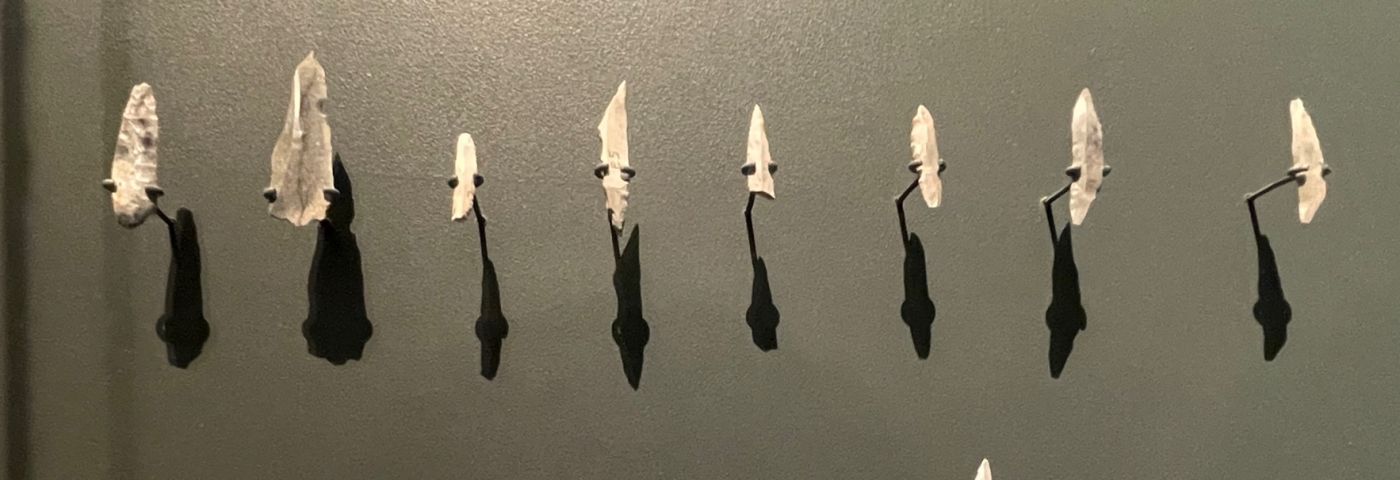The Microliths
by Chris Cundy
The music of the Microliths is a response to Corinium Museum’s display of twenty two tiny flint blades dating from the Mesolithic, or Middle Stone Age. They were used as harpoons fixed onto throwing spears with a birch tar or glue, and produced for composite tools such as bows and arrows.
The Microliths are precision objects made by hunter gatherers who travelled vast distances and came to Gloucestershire sometime between 8’500 ~ 4’000 BCE. Individually they measure just a centimetre or two in length and each one has been cut from a piece of flint before being worked into the fine parallel lines that make each blade. Their presence here in the Stone Age to Corinium gallery draws me into their world. From behind the glass they speak of an instinctive and changing landscape. Each Microlith feels like a fleeting moment.
I’ve used lots of percussion in this piece both from the piano, played by Marjolaine Charbin and from the percussion world of tam tam, bass drum and gongs, played by Mark Sanders. We also have two low string players; Bruno Guastalla on cello and Dominic Lash on the double bass who use ricochets, pizzicato actions and sometimes more oblique noises. The score is made up of twenty two segments of suspended time, and because of the way it’s conducted the players never quite know how long each of these moments will last. It emerges from silence and explores an atmosphere of fragmented points, of refrain, and fleeting glimpses.
Adam’s poem reflects how our approach to performing this music seems to entangle us with the objects in the Museum and with the ancient world they belong to.
Microlith Music
at Corinium Museum
by Adam Horovitz
These are the teeth we pulled
from the jaws of the past;
a handful of pinned notes,
their shadows cast as piano sharps
and flats on a museum wall.
Behold: twenty two
segments of suspended time.
Once, they were tools for survival,
for making and undoing.
Keys to a life run hard
beneath looping symphonies
of sun’s rise, seasons shift.
Now, a long diminuendo
of light and blood lingers
in each arrow- and spear-head,
each vicious harpoon barb
caught in soft-spun light.
Behind glass, each slivered note
of this fossilised music resonates
with a song of life-in-death, death-in-life.
A capella only, but still ready for an aria.
For orchestras of wood and leather to bind
these barbs of quick despatch back in
to the brutal music of their making.
© 2022 Chris Cundy & Adam Horovitz
Archaeology of the Ear is partnered with Corinium Museum and Resonance 104.4FM
Supported by Help Musicians and Arts Council England










